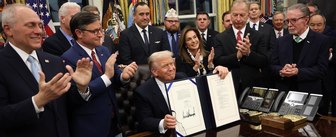Last week, the U.S. Census Bureau released its report on how America’s population has changed over the last decade. The report revealed an increasingly diverse America, with the white population declining for the first time in U.S. history. Even still, the white people continue to make up the largest race or ethnicity group in the United States.
Just over half the country (55%) claims to have heard anything about the census results released last week, and in the latest Economist/YouGov poll most American adults (57%) know that the white population of the country is decreasing. For many, this is not a good thing.
Most Americans who say the nation’s white population is decreasing (54%) believe that is neither a good thing nor a bad thing. However, white Americans who recognize the change (30%), especially white Republicans in this group, are more likely (51%) than the rest of the country (23%) to think it is a bad thing.
The drop in the white population was accompanied by an increase in the urban population. Two in five Americans (41%) are aware that cities are growing, and those who do are more than twice as likely to call this change a bad one (30%) than to say it is good (13%), though an even larger share (43%) say it is neither good nor bad.
Americans have always been skeptical of the accuracy of the numbers the census reports. In this poll, only 12% believe the total population the census reported is accurate – nearly half (46%) say there are more people living in the country than the census reported. But the skepticism that the census undercounts the total population is not new. In 2014, 58% in an Economist/YouGov poll said that the 2010 census also undercounted the population.
The figures the Census Bureau released last week will be used in redrawing the boundaries for congressional and state legislative seats, each of which must have equal populations. Both Republicans (41% vs 19%) and Democrats (48% vs 19%) believe the results of the redrawing of congressional district lines in their own state will be more unfair than fair.
Unfairness is perceived in all regions of the country.
In most states, the drawing of district boundaries is done by state legislators. Few want this to continue. Americans would opt to have boundaries drawn by independent commissions (50% want this), something that currently exists in a minority of states, though the number is growing.
Republicans (43%) are less likely than Democrats (66%) to support independent commissions drawing district boundaries, perhaps because their party controls a majority of state legislatures.
See the toplines and crosstabs from this Economist/YouGov poll
Methodology: The Economist survey was conducted by YouGov using a nationally representative sample of 1,500 US Adult Citizens interviewed online between August 14 - 17, 2021. This sample was weighted according to gender, age, race, and education based on the American Community Survey, conducted by the US Bureau of the Census, as well as 2016 Presidential vote, registration status, geographic region, and news interest. Respondents were selected from YouGov’s opt-in panel to be representative of all US citizens. The margin of error is approximately 2.8% for the overall sample.
Image: Pexels











